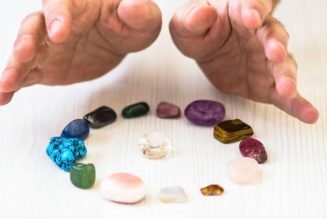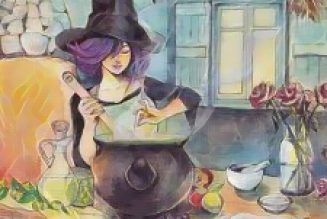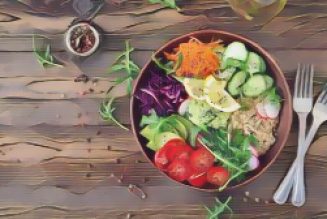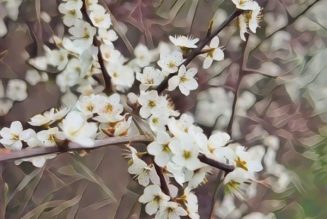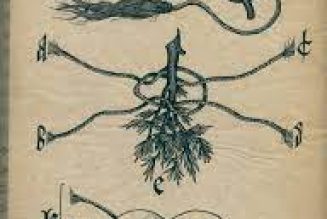Other Names Albahaca, St. Joseph’s Wort, Sweet Basil
General Information
Basil is a member of the mint family with a characteristic square, hairy stem, labiate flowers and opposite leaves. It has a rich, spicy aroma reminiscent of the other mints with a hint of clove. Flowers appear as a whorl in summer and are usually white or pale pink or purple.
Varieties
Sweet BasilOcimum basilicum White flowers, deep green leaves. Salads, vinegar, pesto Spicy Globe Basil Compact, good for small gardens. Use like sweet basil. Lettuce Leaf Basil White flowers, large crinkly flowers. Sweeter flavor. Good in salads. Grows like crazy Green Ruffles White flowers, lime green, ruffly, serrated leaves. Much longer than sweet basil. Very ornamental. Lemon BasilO.b. ‘Citriodum’ Finer leaves with a distinct lemony odor. Good for potpourri, tea and salad. Opal BasilO.b. ‘Purpurescens’ Very pretty, ornamental with shiny purplish foliage and lavender flowers. Gives color to herbal vinegar and looks lovely in flower arrangements. There are larger and more compact varieties. Cinnamon BasilOcimum sp., Large, with dark green shiny leaves and pink flowers. Strong spicy flavor and fragrance in both foliage and flowers. Use in dried arrangements, potpourri, tea, vinegar, jellies and cooking. Thai BasilO.b. ‘Siam Queen’ Huge. Upright and branchy. Very nice, but very different flavor and fragrance. Purple stems and flowers. Very pretty. Use in Asian dishes and with fresh fruit. A cultivar of Sweet basil and Holy Basil. Try the leaves battered and deep fried. Mammoth Basil Huge leaves. Ideal for wrapping meats for roasting. Purple Ruffles BasilO. basilicum ‘Purple Ruffles’ Lavender flowers, ruffled, dark maroon, shiny leaves. Very pretty ornamental. Makes a beautiful reddish purple vinegar. Thyrsiflora BasilO. basilicum ‘Thyrsiflora’ Flowers are white and deep lavender with smooth, bright green leaves. Very sweet fragrance. Used in Thai foods. Camphor BasilO. kilimandscharicum White flowers with red anthers and green leaves. Has a distinctive camphor or menthol flavor. Not used in cooking, but great in teas and baths for colds and flu. Holy BasilO. sanctum Lavender flowers with coarse gray green foliage. Sweet fragrance and very ornamental. Not used in cooking.
History and Folklore
”Ocimum” is from the Greek, meaning “to be fragrant” The word Basil comes from the Greek, meaning “King” Basilisicum is from the Latin for Basilisk, a creature that could cause madness and death. It was carried or ingested as a charm against attacks. It may have been used to cure madness, or it may have been attributed with causing madness. Basil may have been brought to Greece by Alexander the Great around 350BCE African folklore claims that basil protects against scorpions, while Greek lore said that scorpions would breed in the presence of basil. European lore claims that it belongs to Satan and you must curse the ground as you plant it in order for it to grow properly. This is where the French idiom, ”semer le basilic” “to sow the basil” came from, it refers to ranting. Basil was used in English folk magic, like so many other things, to ward off harmful spells as well as to keep away pests. Apparently, witches drank basil juice before flying on their brooms. Perhaps it aids in astral projection. During Tudor times, small pots of basil were given to guests as a parting gift. Perhaps it would be useful in traveling spells. Also, several sources say that if a gift of basil is given to a member of the opposite sex, he or she will fall deeply in love with the giver and be forever faithful. In Romania, this act is representative of an official engagement. In India it is highly revered, Holy Basil being sacred to the Hindu religion as a manifestation of the Goddess Tulasi. According to lore, the God Vishnu seduced her in her husband’s guise and, horrified when she realized she’s been unfaithful, however unknowingly, she killed herself. Another version claimed that the mortal Tulasi, whose name was Vrinda, threw herself onto her husband’s funeral pyre because she was so upset that he died. Either way, Vishnu deified her and declared that she should be worshiped by wives and would prevent them from becoming widows. Her burnt hair was turned into the Holy Basil, which is called Tulsi in reference to her, is a Hindu symbol of love, fidelity, eternal life, purification and protection. So important was this plant that in some Indian courts, people swore oaths by a basil bush. According to sources, some Hindu households keep their own basil plant, pray to it, and keep a lamp burning by it at night. In Haiti, Basil is sacred to the goddess of love, Erzulie. It is a symbol of love in Italy. A pot of basil placed on a balcony meant that the woman who lived there was ready to receive suitors.
Propagation
Basil requires full sun and well-drained soil. Sow seeds directly in ground after frost danger has passed. ¼ inch down. Keep moist. Germinates in 5-7 days. Thin to 6-12 inches apart. Or sow indoors. Mulch around stems to retain moisture and reduce weeds. Must be well watered at least once a week. Fertilizer not usually needed. Use sparingly as it will reduce its fragrant oils. Pruning will encourage bushy growth. Treat as an annual or bring indoors in cool weather and keep under artificial lights 6-8 hours per day. Very sensitive to cold. A single frost will kill it. But it is drought tolerant and, if dry and drooping, will usually spring back after a good watering. If sowing indoors, allow six to eight weeks of growth before transplanting or at the very least, wait till they have two pairs of true leaves. To maintain full flavor, pinch off flower spikes as they form. Prune or harvest at least once every two weeks from the top, not the sides, especially cutting back the center stalk. Cut just above where some leaves meet the stem. This is a growth node and will encourage side growth, more leaves. Vulnerable to slugs, whiteflies and spider mites. Plant basil with tomatoes and asparagus to repel aphids, mites, tomato horn worms and asparagus beetles. It is also supposed to improve the general growth and flavor of tomatoes.
Harvesting & Storage
The best time to harvest is on a warm, sunny day, just after the dew has dried and just before the flowers form. But you can harvest basil as you need it. Harvest by pinching off leaves as needed once the plant is strong enough to handle it. If taking a large harvest, leave at least two shoots intact. It will grow back in a few weeks. Hang upside in bunches or lay flat on drying rack to dry. Ensure proper ventilation to reduce the chance of mold. Store in an airtight container away from heat or light for up to one year. The flavor of dried basil is not as good as fresh basil. To maintain better flavor, chop fresh basil and freeze in ice cubes to drop into sauces. Use within one year. You can also freeze whole leaves in a plastic bag. Rub the leaves with olive oil before freezing. Or try mixing chopped basil with butter and then freezing. This is good for fish. Basil can also be preserved by using it to make pesto, herbal butters, and vinegar or make and can sauces while your basil is still fresh. Basil leaves can also be packed in jars of olive oil. Simply stuff as many leaves as you can into a wide-mouthed jar and top with oil and leave in a sunny spot for a week or so, shaking periodically. Then store in a cool spot.
Magical Attributes
Basil is sacred to Vishnu, Tulasi and Erzulie, masculine in nature, and associated with the element of fire and the planet Mars. Basil helps steady the mind, brings happiness, love, peace, and money and protects against insanity. Use basil in spells to attract love and in preparation for astral projection or to bring luck in physical journeys. Apparently carrying a leaf in your pocket or wallet will attract money. Placing one in your cash register will attract money there too. Soak basil in water for three days and then sprinkle the water over the threshold of your place of business to bring in customers and keep away thieves. (Haiti) Dust the upper half of your body, especially over your heart, with powdered basil to keep your lovers eyes only on you. (S. America) Keep a bit of basil in each room to protect the home and family. To protect you when leaving the house, rub some basil on your forehead. (Hindu) Also used in peacemaking spells and to make up after a fight.
Household Use
Basil makes wonderful potpourris, herbal sachets and dried bouquets. Try opal, lemon, anise and cinnamon basil for this. It is reputed to keep flies away and has larvacidal properties against mosquitoes and houseflies. The antifungal and antibacterial properties of basil may make it useful in making household cleaners. After arguing with a loved one, take some time to calm down while sipping some basil tea. Then you’ll be prepared to return to the conversation and settle the dispute peacefully. Serve meals heavily laced with basil during times of family strife and argument to help with reconciliation and peacekeeping. Basil is also useful when a suitor comes a-calling to encourage his or her interest, consider adding a drop or two to your fragrance oil and include it in your recipes when preparing a romantic dinner for two.
Healing Attributes
Basil tea after a meal is said to aid digestion and prevent flatulence. It is used for many stomach complaints, where a calming affect is desired, such as stomach and abdominal cramping due to gas or other reasons and also for digestive ailments. It has a mild sedative action and is also useful for nervous headaches and anxiety. Holy Basil is used in Ayurvedic Medicine to increase the body’s resistance to stress, to enhance adrenal function and for physical and mental endurance and to balances the chakras. The oils of basil have antibiotic and antifungal properties.
Culinary Use
Used in many Italian, Mediterranean and Thai dishes. The main ingredient in pesto and one of the herbs in chartreuse. It’s excellent with most meats, beans, tomato dishes, pasta, rice, eggs, cheese, soups and stews. It adds interest to mildly flavored vegetables. It blends well with thyme, garlic and lemon. Heat reduces basil’s flavor and aroma, so always add it near the end of cooking. The seeds of several types of basil, soaked in water until they become gelatinous, are used in Asian desserts. Try basil mayonnaise or herbal butter. The best sandwich in the world consists of soft goat cheese spread on toast and several slices of fresh, homegrown tomatoes and fresh basil leaves. Serve the bread on the side and drizzle with balsamic vinegar and you have the best salad in the world.














